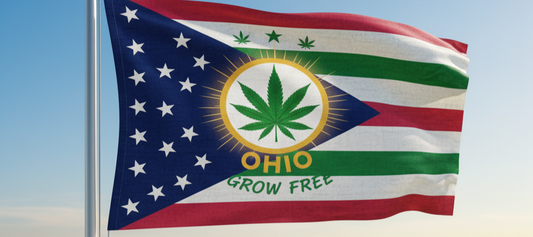What is CBC
What is CBC (Cannabichromene)?
Cannabichromene, or CBC, is a naturally occurring chemical compound found in the Cannabis plant, making it one of the hundreds of cannabinoids alongside more famous compounds like THC and CBD. It is considered a minor cannabinoid because it is typically present in lower concentrations than THC or CBD, though it can still be one of the more abundant ones in some strains.
Key Characteristics
-
Non-Psychoactive: CBC is a non-intoxicating phytocannabinoid, meaning it does not produce the "high" or euphoric effects associated with THC. This is because it does not bind strongly to the body's primary cannabinoid receptor in the brain,
CB1. -
Formation: Like many other cannabinoids, CBC starts as a precursor molecule called cannabigerolic acid (
CBGA). Through a process involving the enzymeCBCAsynthase and eventually exposure to heat or light (decarboxylation),CBGAis converted into cannabichromenic acid (CBCA), which then converts to the active compound, CBC. -
Interaction with the Body: Instead of directly binding to the
CB1andCB2receptors like THC, CBC appears to interact more robustly with other receptors in the body, such as the TRPV1 and TRPA1. These receptors are linked to pain perception, inflammation, and body temperature regulation. This interaction may also increase the levels of the body's natural endocannabinoids, like anandamide. - Entourage Effect: CBC is believed to contribute to the entourage effect, a theory that all the compounds in cannabis work together synergistically to enhance the overall therapeutic benefits.
Potential Benefits and Uses (Preliminary Research)
While research on CBC is less extensive than for CBD and THC, preliminary studies and anecdotal evidence suggest it may offer several potential benefits. It's important to note that much of this research is preclinical (cell or animal studies), and more human trials are needed.
| Category | Potential Benefit/Use |
|---|---|
| Inflammation & Pain | May possess anti-inflammatory and analgesic (pain-relieving) properties by activating pain-related receptors. Potential for use in conditions like IBS and Crohn's disease. |
| Brain Health | Research suggests neuroprotective effects and promotion of neurogenesis (the growth of new brain cells). |
| Mood | May exhibit antidepressant-like properties, possibly by enhancing the effects of anandamide. |
| Skin Health | Potential to help with acne due to its anti-inflammatory and ability to potentially inhibit excessive sebum production. |
| Antimicrobial | Shows promise in laboratory settings for having antibacterial and antifungal properties. |
| Cancer | Early studies have investigated its potential to inhibit the growth of certain types of cancer cells and tumors. |
CBC vs. CBD Comparison
| Feature | CBC (Cannabichromene) | CBD (Cannabidiol) |
|---|---|---|
| Psychoactive | No (Non-intoxicating) | No (Non-intoxicating) |
| Abundance | Minor Cannabinoid (Less abundant than CBD) | Major Cannabinoid (Second most abundant) |
| Primary Receptor | Directly interacts with non-cannabinoid receptors (TRPV1, TRPA1); weak binding to CB1 and CB2. | Works more indirectly with ECS; may block the effects of CB1 activators like THC. |
| Absorption | May have higher bioavailability (better absorbed by the body) in some formulations. | Absorption can be less efficient than CBC. |
| Popularity/Research | Less studied, still considered a "niche" product. | Extensively studied, very popular in the wellness market. |





